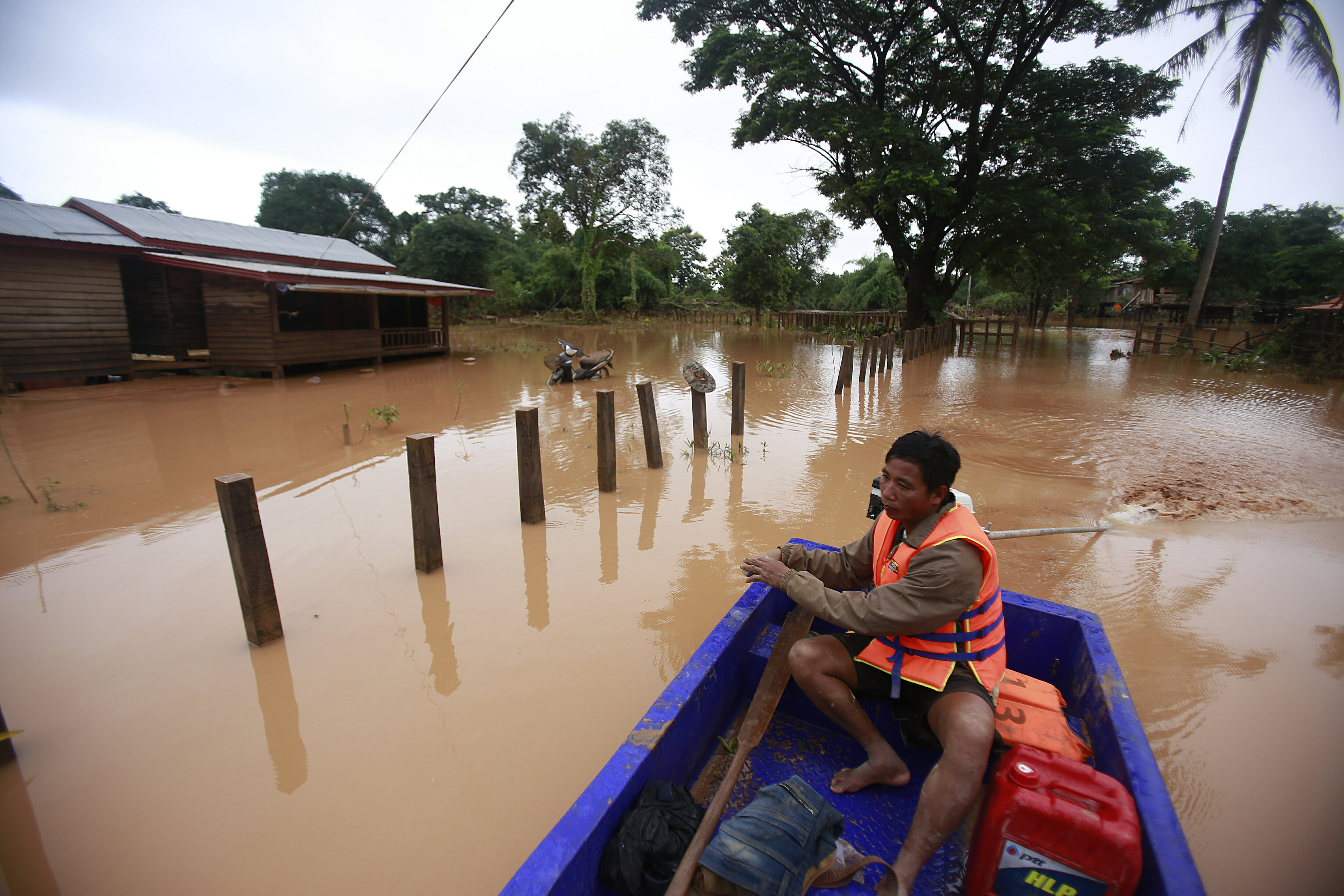
UN expert: Outlook grim for victims of Laos dam collapse
BANGKOK (AP) — A U.N. expert on human rights said Friday that hundreds of people displaced by the collapse of a dam in Laos last year are facing bleak prospects for recovering their homes and livelihoods.
Philip Alston, the U.N. rapporteur on poverty, said Friday in an interview that questions over who’s responsible for the collapse of the dam in southeastern Laos are slowing progress toward recovery.
“There are liability issues. The insurance policy would establish liability and that depends on the technical report,” he said after an 11-day official visit to Laos, including the Attapeu area in southeastern Laos where at least 40 people died and dozens went missing when an auxiliary dam of the joint venture hydroelectric project gave way on July 25.
“Those are things that are capable of dragging on for many years in litigation and so on,” he said. “For the various actors not to be moving full steam ahead with a permanent solution is difficult.”
The dam’s collapse amid torrential rains sent a wall of water to rooftop levels in a wide area, wrecking homes and fields and killing livestock. Initially more than 6,000 people were displaced, according to state media reports.
Alston said conditions in at least two temporary resettlement villages were “really grim” and the land authorities are offering the 3,750 people still in limbo is rocky and infertile. Many victims who once supported their families by fishing and farming likely will be forced into contract labor on cassava plantations.
“People are just really depressed and lethargic,” Alston said. “There will be trouble.”
At a news conference given by Alston in the Lao capital of Vientiane on Thursday, a Lao foreign ministry official took issue with the envoy’s criticisms of the government’s commitment to relying on foreign investment in dams and other projects to help drive economic growth.
Little official information has been made available about the aftermath of the catastrophe, but recent reports by Laos’s state-controlled media have acknowledged that victims of the flooding are still lacking basic necessities, including food, health services, consumer goods and sanitation.
A South Korean company, SK Engineering & Construction, was responsible for building the dam in Attapeu under the terms of a joint venture that also included a Thai company and a Lao state enterprise. The company and the South Korean government have provided millions of dollars in aid to the devastated region, but many initiatives are awaiting the conclusion of a probe into the cause of the disaster.
The Lao government ordered a moratorium on new dam building after the dam’s collapse pending a safety review although construction of projects already underway has continued. Altogether 100 dams are supposed to be built by 2020.
Alston urged the Lao government to ensure that private companies are held accountable for the harm suffered by people affected by dam projects, including those in Attapeu.
“In particular, there should be an independent review of the situation of all the persons who have been evacuated after the Attapeu incident and who are currently living in extremely poor conditions and are subjected to great uncertainty,” he said in concluding a report on his visit.
The Western Journal has not reviewed this Associated Press story prior to publication. Therefore, it may contain editorial bias or may in some other way not meet our normal editorial standards. It is provided to our readers as a service from The Western Journal.
Truth and Accuracy
We are committed to truth and accuracy in all of our journalism. Read our editorial standards.
Advertise with The Western Journal and reach millions of highly engaged readers, while supporting our work. Advertise Today.












